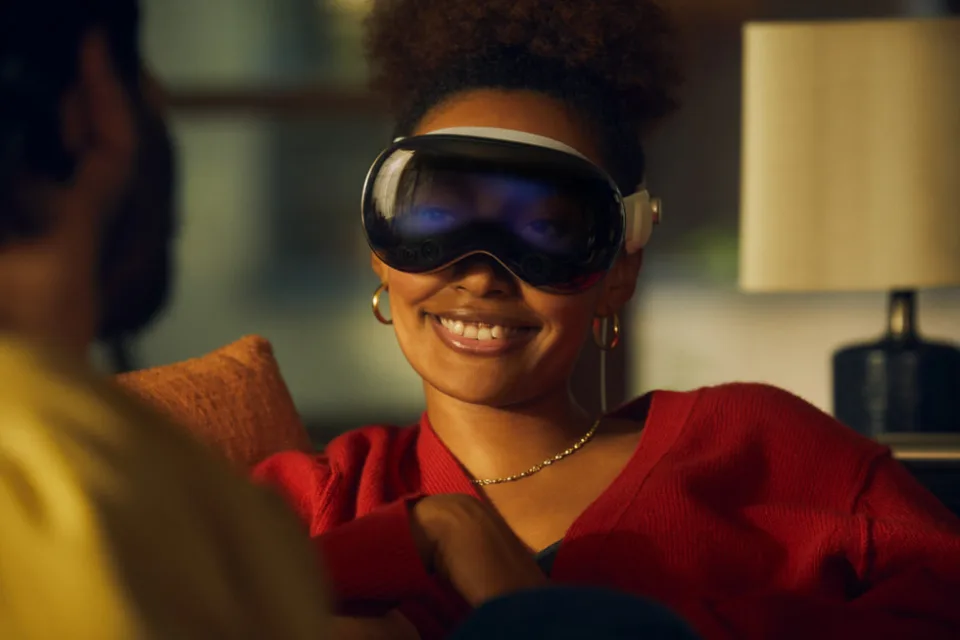For those eagerly anticipating the release of the Apple Vision Pro headset, the wait is almost over. Apple has announced that the highly anticipated mixed reality device will be available in the United States starting on February 2. Pre-orders for the headset, priced at $3,499 for the 256GB storage option, will commence on January 19. Customers can purchase the device through all US Apple Store locations or via the company’s online store.
For users requiring vision correction, Apple recommends Zeiss optical inserts that can be magnetically attached to the headset, as the Vision Pro is not compatible with glasses. Readers are priced at $99, while prescription lenses are available for $149. It’s important to note that these inserts will only be available for online purchase, and a prescription is required for the prescription lenses. However, Apple mentions that “not all prescriptions are supported.”
The era of spatial computing has arrived! Apple Vision Pro is available in the US on February 2. pic.twitter.com/5BK1jyEnZN
— Tim Cook (@tim_cook) January 8, 2024
The Apple Vision Pro marks a significant milestone as Apple’s first major product line introduction since the launch of the Apple Watch in 2014. The company strategically unveiled the release date for the Vision Pro just as CES 2024 was commencing, seemingly aiming to divert attention from the show’s exhibitors without physically participating in the event in Las Vegas.
Introduced at WWDC last year, the Vision Pro represents Apple’s initial venture into spatial computing. Users will primarily control the device using hand gestures, eye movements, and voice commands. Additionally, for productivity purposes, a Magic Keyboard and Trackpad can be paired, while a controller is available for gaming sessions.
Apple has announced a new App Store designed for the Apple Vision Pro, supporting over a million apps from the iOS and iPadOS ecosystems. While the store will feature familiar apps, there will also be new ones specifically tailored for the headset’s visionOS. Interacting with these apps involves looking at them, tapping fingers using the Double Tap feature (similar to Apple Watch), wrist flicks for scrolling, and utilizing dictation or a virtual keyboard for typing. Siri integration allows users to control media playback, open and close apps, and perform various other functions.
One notable feature is the ability for users to place apps within a 3D virtual environment, potentially enhancing multitasking capabilities. Additionally, users can access their Mac through the Vision Pro, providing a large 4K canvas for desktop or laptop interactions, facilitating productivity and tasks.
On the entertainment front, the Apple Vision Pro offers the ability to stream shows and movies from platforms like Apple TV+, Disney+, and Max on a virtual screen that appears to be an impressive 100 feet wide. The headset supports HDR, and users can explore more than 150 titles in 3D through the Apple TV app. Apple’s new Immersive Video format is also supported, allowing users to engage with 180-degree, high-resolution 3D experiences.
For gaming enthusiasts, the Vision Pro supports over 250 Apple Arcade titles and other games available on the App Store. The headset introduces “spatial games” like Game Room, What the Golf?, and Super Fruit Ninja, where the device transforms the surrounding space for a more immersive gaming experience. Additionally, users may have the capability to utilize PlayStation and Xbox remote play features with the Vision Pro.
In terms of immersion, the Vision Pro allows users to virtually transport themselves to tranquil environments, such as a national park or the surface of the Moon, providing a break from viewing their actual office or home in mixed reality. Using the Digital Crown, users can adjust the level of immersion in these virtual environments.
The iPhone 15 Pro and iPhone 15 Pro Max have gained a remarkable capability to capture spatial photos and videos. The immersive experience continues with the Apple Vision Pro, where these spatial captures can be viewed on a “life-size scale.” Panoramas, for instance, will wrap around the user, creating a more engaging and realistic visual experience.
FaceTime and other calls receive a noteworthy upgrade with the Vision Pro. During calls, headset users will be represented as a Persona, a virtual avatar displaying their hand movements and facial expressions. This feature extends beyond FaceTime, as Personas are also supported on platforms like Zoom, Webex, and Microsoft Teams. Participants using a Mac, iPad, or iPhone will appear in a tile, and spatial audio will create the illusion that each person’s voice originates from their respective tile in the shared space.
To address the common issue of wearers of virtual reality or mixed reality headsets appearing disconnected from those around them, Apple introduces EyeSight technology. This innovation makes it seem as though the Vision Pro is transparent, enabling others to see the wearer’s eyes and fostering a sense of connection and presence.




